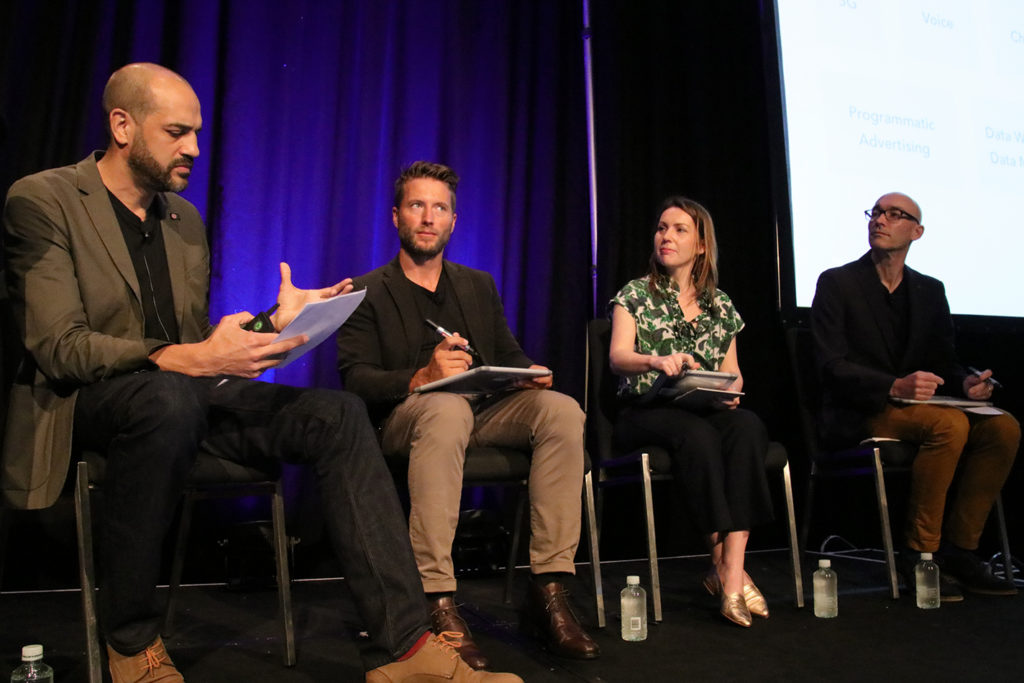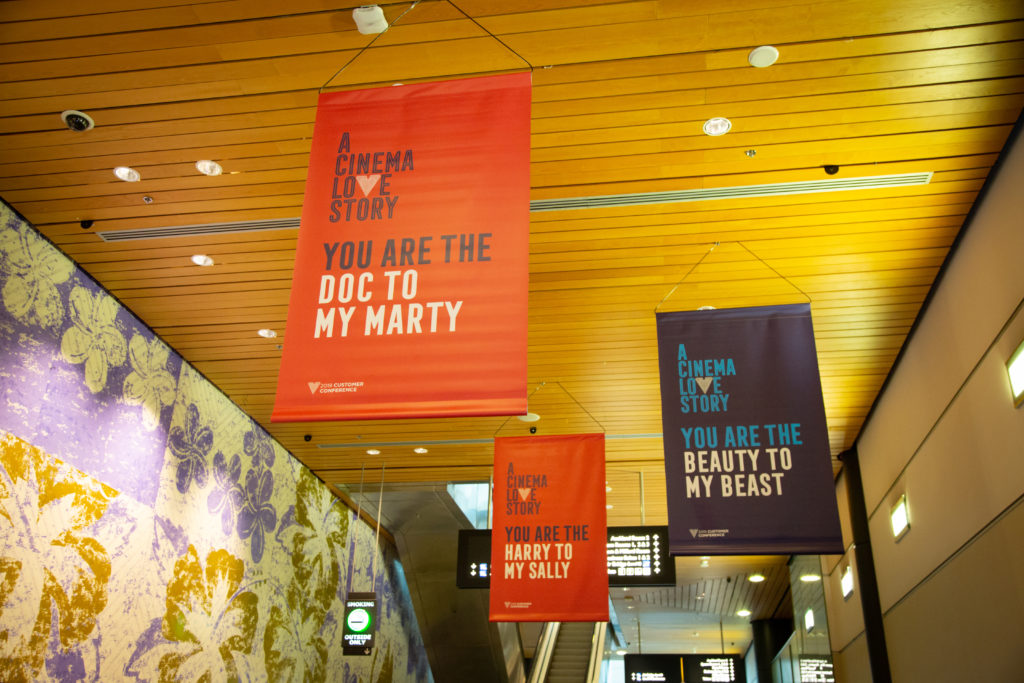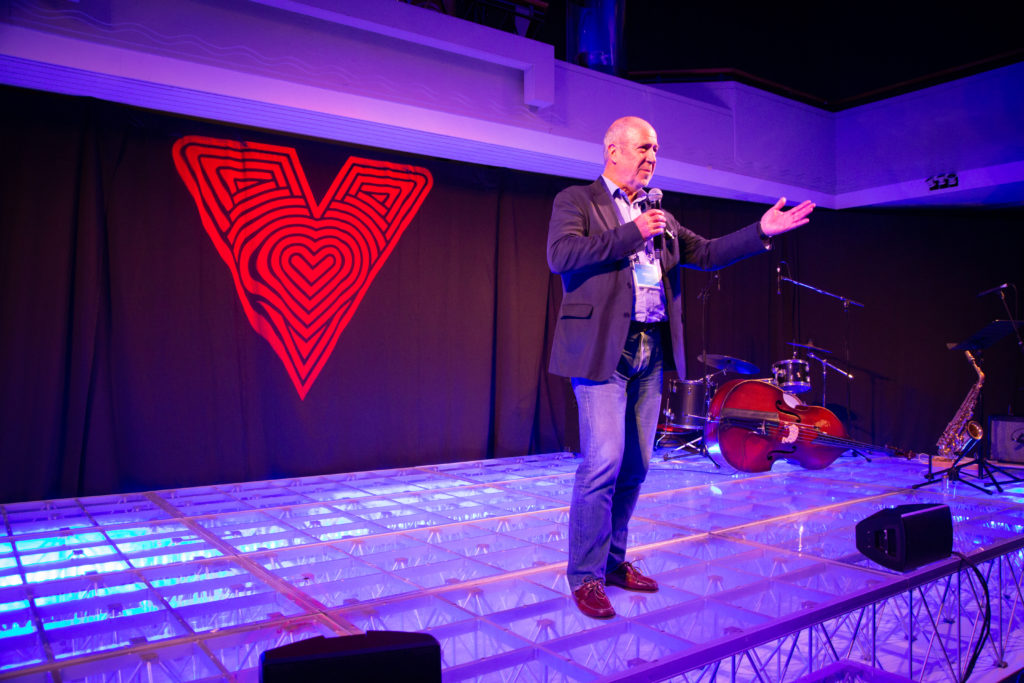On February 18, 2019, hundreds gathered in Auckland, New Zealand for the 9th biennial Vista Customer Conference. Vista Entertainment Solutions (‘Vista Cinema’, the founding company of Vista Group International), has been providing cinema management technology solutions to the cinema exhibition world for over two decades. Its first conference, recalled Vista Group CEO Kimbal Riley in his opening remarks, “was held in a small meeting room with around 15 people.” It’s fair to say that it’s grown quite a bit, from an internal gathering to an opportunity for the Vista Group to present its current and future products to clients hailing from 24 countries.

There are a lot of products. Over three days, fours simultaneous presentation tracks panel tracks touched on Vista Group’s various subsidiaries, including but not limited to Movio (moviegoer marketing solutions), Cinema Intelligence (scheduling and box office forecasting and analysis), Powster (customized video content), and Veezi (management for small cinemas). Topics addressed included dine-in, F&B seat service, digital signage, cinema data storage, mobile sales, customized marketing solutions, and—the topic on everyone’s lips—subscription services.
One phrase, however, tied the conference together: “Omni-channel strategy.” A much-dropped buzzword in the business world, what this boils down to is, well… tying things together.
Put simply, omni-channel marketing in this context refers to taking all the channels used to connect with customers—websites, social media accounts, apps, in-theater kiosks—and knitting them together into a cohesive whole that presents the user with a consistent experience.
By taking the data gathered by those various outlets and collecting it under one digital umbrella, explains Vice President of Product Management for Vista Cinema Mark Pattie, you can provide each customer with a “unified, personalized, integrated message” tailored to their moviegoing history. It’s something that’s increasingly important as ticket sales in the U.S. transition from in-person to digital, with more and more moviegoers opting to purchase tickets on apps, mobile websites, or via social media platforms. Vista Cinema’s own omni-channel strategy involves taking the various digital platforms that they provide to cinemas—websites, mobile apps, kiosks, and point of sale systems—and making them consistent in terms of configuration, functionality, and experience.
On the moviegoer’s side of things, Pattie highlights Vista’s Customer Experience Manager—or CXM—as “a great example of an omni-channel approach.” Not yet launched, but coming soon, the CXM allows theaters to take all the data they’ve gathered about each individual customer (what genres they like, what concessions they usually buy, whether they’re a loyalty member, how often they go to premium screenings, etc.) and use it to customize their moviegoing experience.

Buying an electronic ticket? Why not order that popcorn combo you always get at the same time. New customer? Here’s an incentive to join the loyalty program. “[Say I] always choose one type of movie,” explains Leon Newnham, Chief Executive of Vista Cinema. With CXM, a theater’s website can “put that [genre] at the top of the film list, so that it’s the first thing that I see. Because you know the first thing everyone does right now when they’re thinking of going to the movies is wonder: ‘Is there anything good on?’ And then you start scrolling through film lists and watching trailers.” Maybe, in the end, you don’t see anything at all.
As an omni-channel product, Pattie notes, the CXM has value as a driver of both sales and customer loyalty.
The value of a customization came out in the panel ‘In Action: Stories From the Front Line,’ where representatives from Goodrich Quality Theatres, VOX Cinemas, and Event Cinemas touted the value of personalized online marketing campaigns, as enabled by Movio.
Those campaigns change based on the needs of the customer and the chain. General Manager, Customer Experience Alexandra Holden notes that there are multiple versions of each e-blast Australia-based Event Cinema sends, with the goal being to “bring the right message to the right person at the right time.” For both Event Cinemas and Midwest-based Goodrich Quality Theatres, driving loyalty card membership is a priority.
For VOX Cinemas’ Saudi Arabian locations, on the other hand, the focus is more basic. With the country’s theater ban having been lifted so recently, “occupancy rates are amazing!” says Jocelyn Davies, Head of Customer Experience and Insights. “We’re not so much concerned about driving ticket sales, but more the educational component of the cinema experience. We’re communicating to our customers how the cinema works. As crazy as that might sound to some of us, a lot of our customers have never walked into a cinema before, so we really try to use the CRM [customer relationship management] channel to educate the customers on what cinema is. What they do once they purchase the ticket. How they pay for F&B. How they behave within the cinema environment.”
Across the board, data on moviegoer habits can be used to customize marketing efforts, directing customers’ attention to particular movies they’re more likely to be interested in. But, while inestimably valuable to cinemas, moviegoer data can be difficult to comb through and properly take advantage of. There’s a ton of it, first off, which means it requires a substantial amount of digital space (not to mention money) to store. And it can take specialized knowledge and equipment to analyze it all and tease out the relevant conclusions.
That problem was the starting point for Movio 360, which Movio CEO Will Palmer identifies as the “next chapter in [Movio]’s evolution.” Launching soon, Movio 360 is a data warehouse designed for the film industry that “pulls moviegoer data from a wide variety of points, including campaign activity, data enrichment, point of sale, and loyalty [programs]. With numerous complex and varied data points, executing a data-driven strategy is extremely difficult and requires expertise. Movio 360 provides full-fidelity data by moviegoer, creating clarity out of chaos.”

All if this ties into the increasing importance of artificial intelligence in the exhibition industry. Using artificial intelligence, the interactions taking place between cinema and customers will become, according to Palmer, “far less generic, and far more custom and personified. [They will be] driven by the learning that we have from the data that’s been cumulated.”
“Data-driven.” “Digital.” “Artificial intelligence.” If the future of moviegoing seems a bit impersonal, Newnham argues that it’s the exact opposite. “If you’re going into a retail store to buy some clothes, the retail assistant can influence how you feel in that moment,” his analogy goes. “‘How do I look in this thing? How much do I trust this person?’” As fewer and fewer moviegoers purchase tickets in-person, what Vista is doing is adding that intimate connection back into the transaction: “So how do you have somebody feel good? How do you make it personal? How do you change the experience from one moment to the next, based on your interactions with them so far?”
Once that data baseline has been established, the movie theater employee is freed up to enable an improved interaction with the customer. An example of this can be seen in the case of SERVE, another new product previewed at the Vista Customer Conference and officially launched at CinemaCon. Vista’s response to the explosion of dine-in concessions, Serve is an application that allows theater waitstaff to take food and beverage orders directly from customers at their seats. As with other Vista products, Serve is highly customizable, allowing servers to input special requests and set a time for various orders to be brought out.
Through integration with the chain’s loyalty program, an additional layer of customization—one dependent on the gathering of data—is possible. A server, seeing that a customer gets a particular appetizer every time, can recommend that to them from the get-go. Prompts and suggestions, tailored to the dining history of individual customers, can serve to maximize upselling opportunities.
Just as moviegoers differ, so too do Vista’s customers. “Something inherent in the way the group operates is that no two customers are the same,” explains Riley. “There’s a lot of core stuff that is similar, but they each have their own particular ways of doing things. The theatrical side of the business, the cinema exhibitors, are in varying stages of waking up to the fact that they are in heavily competitive market for people’s entertainment dollars. They need to enhance their experience, whether it’s through the quality of their recliners or through the expansion of advanced food and beverage, and/or by other means. The experience they offer is tailored to their customer—and that varies tremendously across markets.”

In the end, Riley says, “our focus is on supporting and enhancing the theatrical experience”—in a flexible way that responds to the evolving industry and evolving needs of their clients. “Our customers have input into the design of our products; there is little point in setting out to write a piece of software without knowing what it will do is what the customer is going to want. Our conference is a pivotal component of making sure we stay on track.”


Share this post